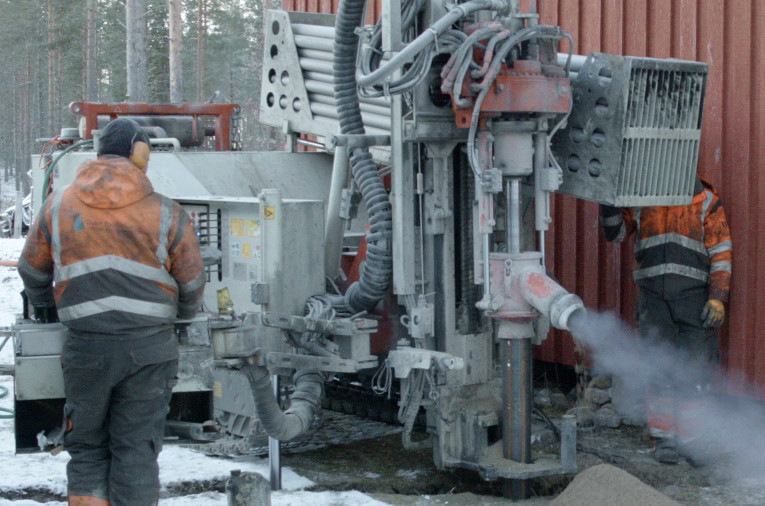Incident Report: Hazardous Material Release at ATI Millersburg Operations
Executive Summary
A hazardous chemical release occurred at the ATI Millersburg Operations facility, raising significant concerns related to several Sustainable Development Goals (SDGs), including Good Health and Well-being (SDG 3), Decent Work and Economic Growth (SDG 8), and Sustainable Cities and Communities (SDG 11). On Tuesday evening, a cloud of zirconium chloride was released from a furnace, prompting an immediate emergency response and highlighting the critical need for robust industrial safety protocols to protect workers and the surrounding environment, in line with SDG 9 (Industry, Innovation, and Infrastructure) and SDG 12 (Responsible Consumption and Production).
Incident Details and Emergency Response
At approximately 8:00 p.m., a visible cloud of hazardous material was emitted from the chemical operations area of the ATI facility. The Albany Fire Department’s Hazmat Team 5 was dispatched, arriving on the scene within seven minutes. First responders determined that the leak was primarily contained within the building, mitigating the immediate threat to the wider community. This rapid institutional response underscores the importance of SDG 16 (Peace, Justice, and Strong Institutions) in ensuring public safety.
Impact on Human Health and Well-being (SDG 3 & SDG 8)
The incident directly impacted the health and safety of facility employees, a key concern under SDG 3 and SDG 8, which advocates for safe and secure working environments.
- Twelve individuals were evaluated on-site for chemical exposure.
- Six employees required hospitalization for further treatment.
- ATI has confirmed that all hospitalized employees have since been released and are undergoing continued health monitoring.
Chemical Hazard Analysis (SDG 12)
The released substance was identified as zirconium chloride. The environmentally sound management of such chemicals is a core target of SDG 12. Exposure to zirconium chloride poses severe health risks, including:
- Severe burns upon skin contact.
- Long-term lung damage if inhaled.
- Permanent eye damage from direct contact.
- Internal burns or organ damage if ingested.
Corporate Accountability and Industrial Safety (SDG 9)
ATI Specialty Alloys & Components issued a statement attributing the release to a sudden increase in heat within a furnace, which triggered a built-in safety valve. This event highlights a failure in industrial infrastructure and process safety, areas central to SDG 9. The company has asserted that the danger to the public was low due to the brief, one-hour duration of the release.
Environmental Monitoring and Community Safety (SDG 11)
To ensure the safety of the local community and align with the objectives of SDG 11, ATI has taken steps to restore and confirm air quality.
- The company stated its confidence that air quality at and near the facility has been restored.
- In collaboration with the Department of Environmental Quality, ongoing monitoring is in place.
- ATI has expanded active and passive air quality monitoring across its operations to confirm the absence of detectable emissions.
Corrective Actions and Path Forward
In a commitment to prevent future occurrences and uphold principles of responsible production (SDG 12) and safe work (SDG 8), ATI is undertaking the following measures:
- A thorough analysis of the malfunctioning furnace is being conducted to determine the root cause of the failure.
- Necessary actions will be identified and implemented to safely restore the equipment to operational status.
- Continuous health monitoring for all affected employees remains a priority.
Analysis of SDGs, Targets, and Indicators
1. Which SDGs are addressed or connected to the issues highlighted in the article?
- SDG 3: Good Health and Well-being: The article discusses the health impacts of a hazardous chemical release, with people evaluated for exposure and hospitalized. The chemical, zirconium chloride, is described as dangerous, causing severe burns, lung damage, and other health issues.
- SDG 8: Decent Work and Economic Growth: The incident is a workplace accident that affected employees, who were sent to the hospital and are having their health monitored. This relates to the promotion of safe and secure working environments.
- SDG 9: Industry, Innovation and Infrastructure: The event occurred at an industrial facility (ATI Millersburg Operations) due to a furnace malfunction. This highlights the need for safe, resilient, and sustainable industrial processes and infrastructure.
- SDG 11: Sustainable Cities and Communities: The release of hazardous materials into the air posed a risk to the local community. The article emphasizes the rapid and efficient response of the local fire department’s hazmat team, which is a key component of community safety and disaster resilience.
- SDG 12: Responsible Consumption and Production: The accidental release of a dangerous chemical into the environment is a direct consequence of a failure in the sound management of chemicals within an industrial production process.
2. What specific targets under those SDGs can be identified based on the article’s content?
- SDG 3: Good Health and Well-being
- Target 3.9: By 2030, substantially reduce the number of deaths and illnesses from hazardous chemicals and air, water and soil pollution and contamination. The release of zirconium chloride and the subsequent hospitalization of individuals directly relate to illnesses caused by hazardous chemical pollution.
- SDG 8: Decent Work and Economic Growth
- Target 8.8: Protect labour rights and promote safe and secure working environments for all workers. The incident, where employees were exposed to a dangerous chemical, underscores the importance of ensuring a safe working environment.
- SDG 9: Industry, Innovation and Infrastructure
- Target 9.4: By 2030, upgrade infrastructure and retrofit industries to make them sustainable…and greater adoption of…environmentally sound technologies and processes. The furnace malfunction that triggered the safety valve indicates a need to analyze and improve industrial processes to prevent such releases.
- SDG 11: Sustainable Cities and Communities
- Target 11.6: By 2030, reduce the adverse per capita environmental impact of cities, including by paying special attention to air quality. The chemical release directly impacted the local air quality, which the company is now monitoring more extensively.
- SDG 12: Responsible Consumption and Production
- Target 12.4: By 2020, achieve the environmentally sound management of chemicals and all wastes throughout their life cycle…and significantly reduce their release to air, water and soil in order to minimize their adverse impacts on human health and the environment. The event is a clear example of an accidental release of a chemical that this target aims to prevent.
3. Are there any indicators mentioned or implied in the article that can be used to measure progress towards the identified targets?
- For Target 3.9 (Reduce illnesses from hazardous chemicals):
- Indicator: The number of people requiring medical evaluation or hospitalization due to chemical exposure. The article explicitly states, “12 people were evaluated for chemical exposure and 6 were sent to the local hospital.”
- For Target 8.8 (Promote safe working environments):
- Indicator: The number of industrial accidents resulting in worker exposure to hazardous materials. The incident itself serves as a data point for this indicator.
- For Target 11.6 (Reduce adverse environmental impact/air quality):
- Indicator: The implementation and results of air quality monitoring. The article mentions that ATI has “expanded active and passive air quality monitoring across our full operations to confirm there are no detectable air emissions.”
- For Target 12.4 (Reduce chemical releases):
- Indicator: The number and volume of unintentional releases of hazardous chemicals. The article describes one such event: a “brief release to the air of zirconium chloride from a furnace.”
4. SDGs, Targets and Indicators Table
| SDGs | Targets | Indicators |
|---|---|---|
| SDG 3: Good Health and Well-being | 3.9: Substantially reduce the number of deaths and illnesses from hazardous chemicals and air, water and soil pollution and contamination. | Number of people requiring medical evaluation or hospitalization due to chemical exposure (12 evaluated, 6 hospitalized). |
| SDG 8: Decent Work and Economic Growth | 8.8: Protect labour rights and promote safe and secure working environments for all workers. | Number of industrial accidents resulting in worker exposure to hazardous materials (the incident itself). |
| SDG 9: Industry, Innovation and Infrastructure | 9.4: Upgrade infrastructure and retrofit industries to make them sustainable…and greater adoption of…environmentally sound technologies and processes. | Incidents of industrial process failures leading to hazardous releases (furnace malfunction). |
| SDG 11: Sustainable Cities and Communities | 11.6: Reduce the adverse per capita environmental impact of cities, including by paying special attention to air quality. | Implementation of expanded air quality monitoring near industrial facilities. |
| SDG 12: Responsible Consumption and Production | 12.4: Significantly reduce their release to air, water and soil in order to minimize their adverse impacts on human health and the environment. | Number of unintentional releases of hazardous chemicals (one release of zirconium chloride). |
Source: kezi.com







